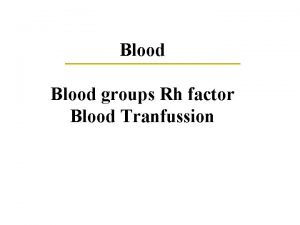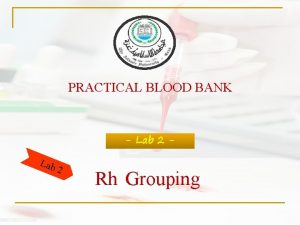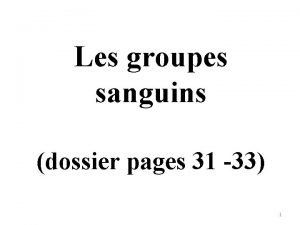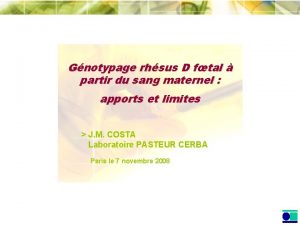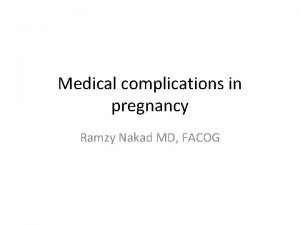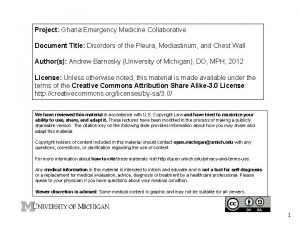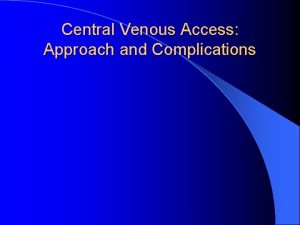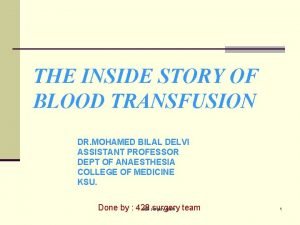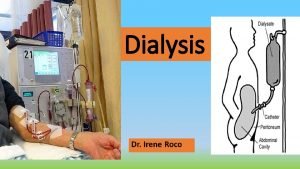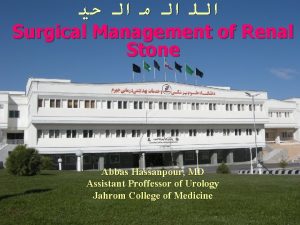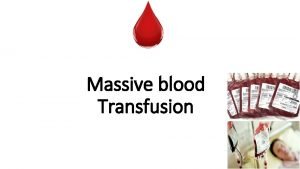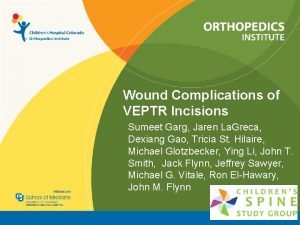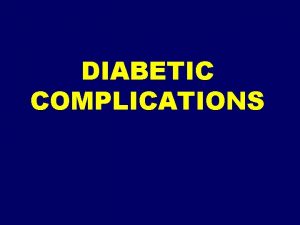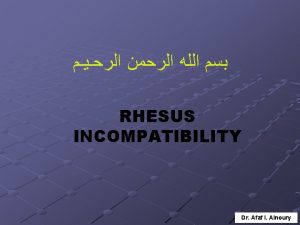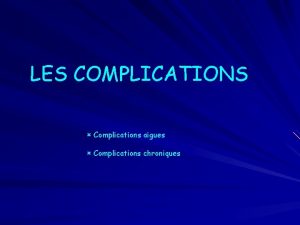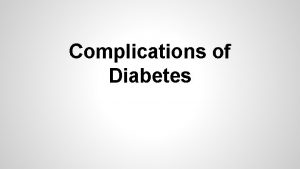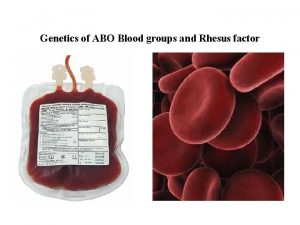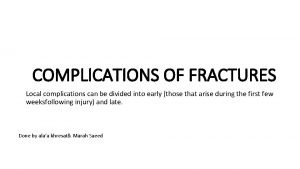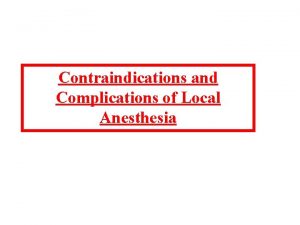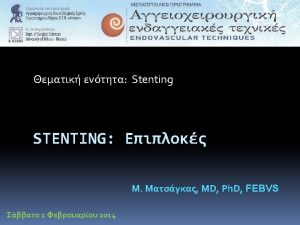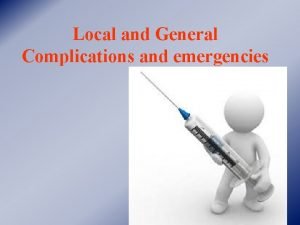Rh Factor Rh factor or rhesus factor complications












- Slides: 12

Rh Factor Rh factor or rhesus factor complications with pregnancy

ABO blood group Review The I gene encodes enzymes that attach cell surface molecules on the sugar chains of red blood cells. A allele B allele O allele attaches antigen A attaches antigen B no attachment performed Blood type incompatibility A person with type A blood who is transfused with type B blood will have antibodies that recognize and destroy the red blood cells carrying type B.

Type O is the universal donor. Type AB is the universal recipient.

Rh factor or rhesus factor is another blood group affecting cell surface molecules. Phenotypes: Rh+ - produces Rh factor on RBC Rh- no Rh factor on RBC Rh incompatibility occurs when an Rh- mother has an Rh+ child. hemolytic disease of the newborn - HDN occurs with the second pregnancy preventable through screening and anti-Rh+ therapy


Steps to HDN Rh- Mom exposed to Rh+ blood of first fetus during birth. Mom develops antibodies. During second pregnancy, if fetus is Rh+, mom’s antibodies diffuse through the placental barrier and bind (clump) to the fetal blood. Miscarriage / Death occurs Prevention Mother is given immune suppression drugs for around 3 weeks during and around the birth event.

Labour and Delivery

Hormonal Control at Birth Estrogen levels rise (placenta) uterus expresses receptors for oxytocin Oxytocin (posterior pituitary) oxytocin and prostaglandins cause the uterus to contract and labor begins. Relaxin (more in other animals) relax the pubic ligaments soften and enlarge the opening to the cervix.

Three Stages to Labour Early Labour (0 -3 cm) – contractions every 5 minutes Active Labour (4 cm-7 cm) – contractions less than 5 minutes apart. Transition (8 cm-10 cm) – contractions last 60 s-90 s with approximately 45 s rest.

Delivery This stage can last from. 5 to 2 hours. With strong contractions and pushing the baby is moved through the birth canal.

Afterbirth After baby is born the placenta will follow. This could occur anywhere from 5 minutes to 30 minutes after delivery.

Breastfeeding Milk synthesis is stimulated by the pituitary hormone prolactin (PRL) its release from the breast is stimulated by oxytocin
